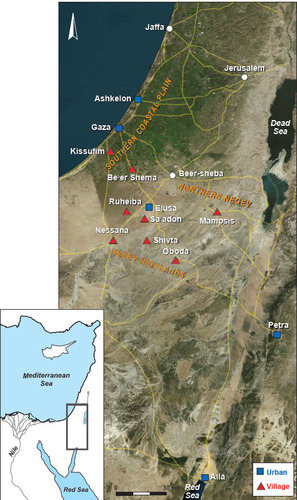Figures & data
Figure 2 Tuleilat el->anab, literally “grape hillocks”, are stone mounds formed as a by-product of stone clearing on slopes to improve runoff. Their spatial distribution may resemble vineyards, but the actual vineyards of Late Antiquity would have been planted in the terraced wadi below, in this case, Nahal Lavan near Shivta (photo Gideon Avni).
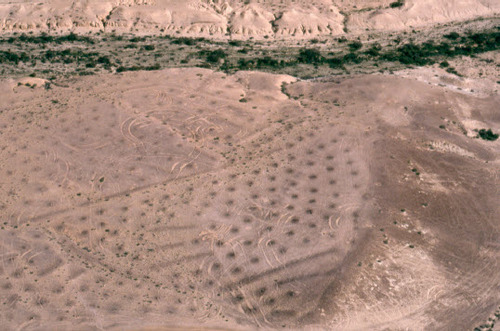
Figure 3 Negev Highland winepress. This Byzantine industrial winepress sits atop the acropolis of Oboda (photo Gideon Avni).
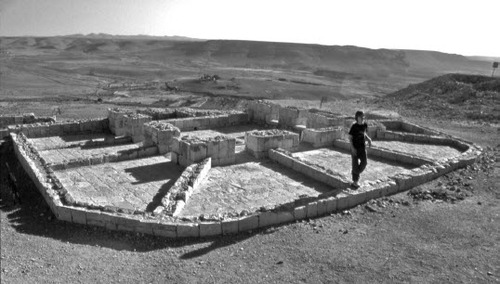
Figure 4 Reconstructed desert farm, Shivta. An experimental farm reconstructed by Michael Evenari and his team in the 1960s and 1970s, in aerial view (above) and from the ground today (below). The farm used ancient techniques of desert rainwater runoff harvesting which reached their greatest application in the Negev Highlands during the Byzantine 5th–6th centuries CE (photos Gideon Avni, Guy Bar-Oz).
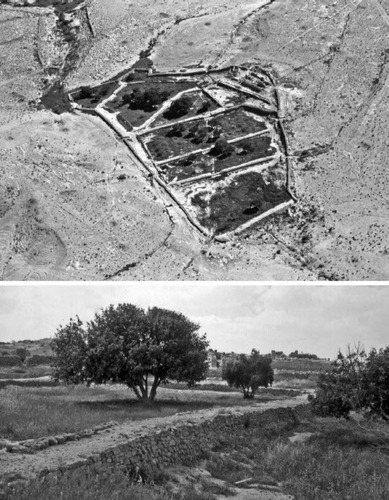
Figure 5 Above: Excerpts from the Be<er Shema Byzantine church mosaic displaying several components of Negev viticulture: pigeons flanked by grape leaves, one of which roosts on an adapted Gaza wine jar (centre); a donkey (left), a camel (right) and their respective drivers, whose loads are covered but which appear on a background of grape clusters and leaves. Below: The mosaic (left) found at Kissufim, not far from Gaza, captures the overland transport of the products of viticulture in the region during Late Antiquity. Orbikon the camel driver appears to lead on a tired camel with a cluster of grapes. Strapped to the camel’s back are Gaza wine jars of which an archaeological example is shown (right). Photos: Be<er Shema mosaic: Daniel Varga, Israel Antiquities Authority; Kissufim mosaic: Elie Posner, Israel Antiquities Authority Collection at the Israel Museum Jerusalem; Gaza jar: Davida Eisenberg-Degen, Israel Antiquities Authority.
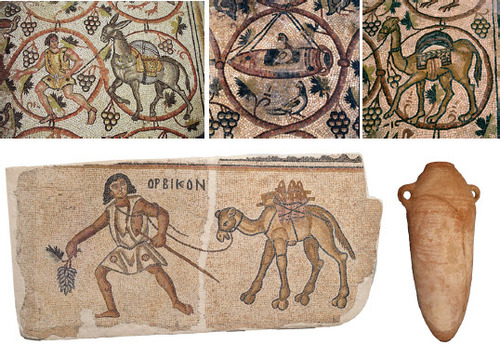
Figure 6 Negev pigeons. Two engraved pigeons roost in the top right corner of a lintel at the entrance to Shivta’s northern church, reflecting the importance of pigeons to the local viticulture-based economy, and, probably, its connection to the church. Pigeons are still part of the landscape in Shivta today (photo Guy Bar-Oz).
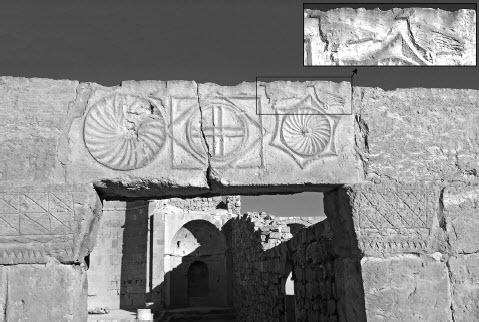
Table 1. Summary of inferential steps and evidence for Negev Highland viticulture

